- About Us
- Advertise
- Editorial
- Contact Us
- Terms and Conditions
- Privacy Policy
- Do Not Sell My Personal Information
© 2025 MJH Life Sciences™ and Dental Products Report. All rights reserved.
Digital Dentistry Offerings Made Great by Today’s Dental Lab Materials
A roundup of some of the many digital dentistry materials available for dental laboratories.
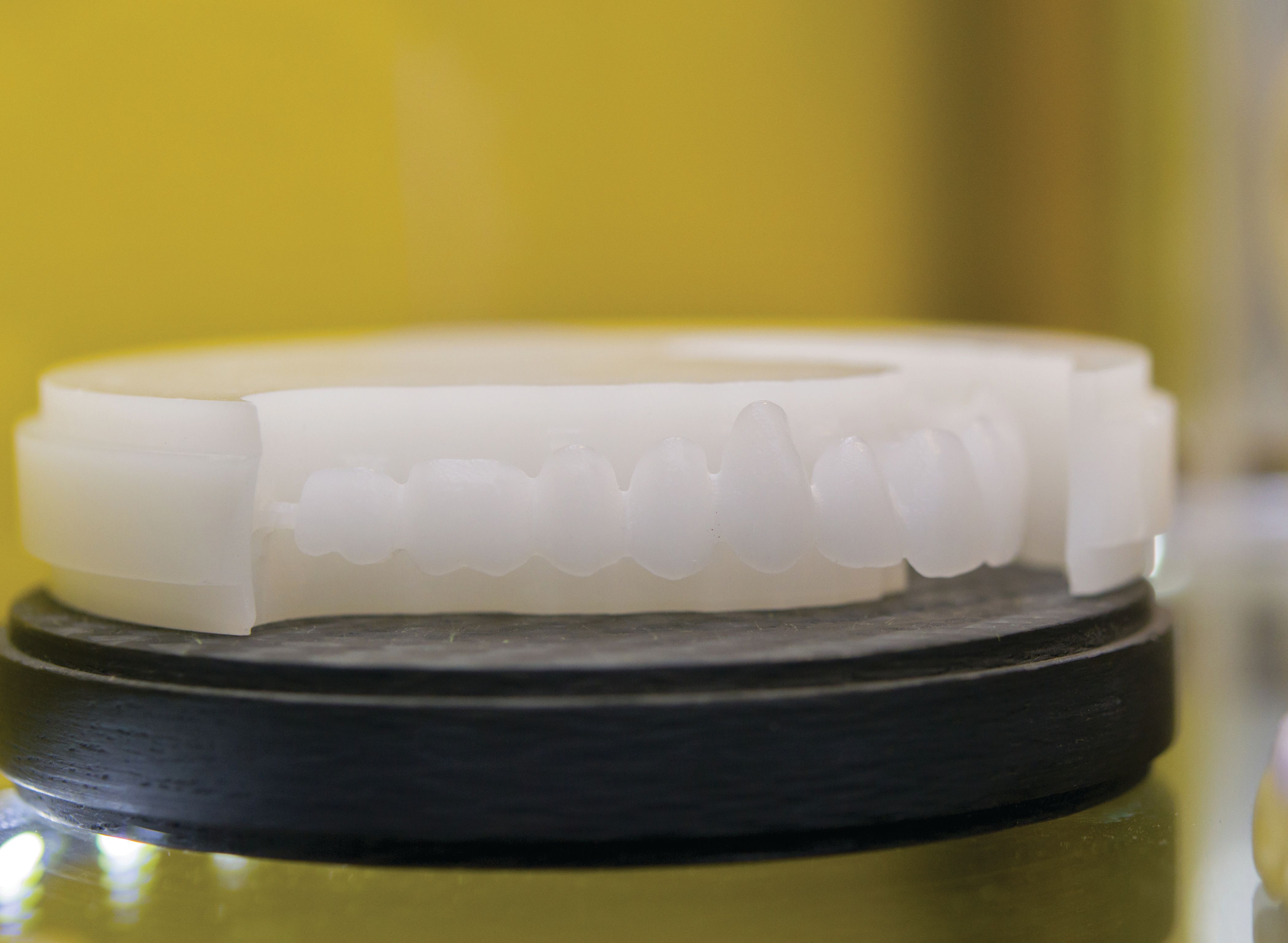
MARI1408 / STOCK.ADOBE.COM
CAD/CAM mills and 3D printers open up so many opportunities for dental labs and digital dentistry. But just as important as the printing and the milling are the materials used to fabricate today’s indirect restorations, ranging from the resins used in 3D printers to a wide array of metal, ceramic, acrylic, zirconia—even some form of combinations designed to produce strong, long-lasting, great-looking results. Here, we take a look at 20 of the many dental materials available to lab technicians.
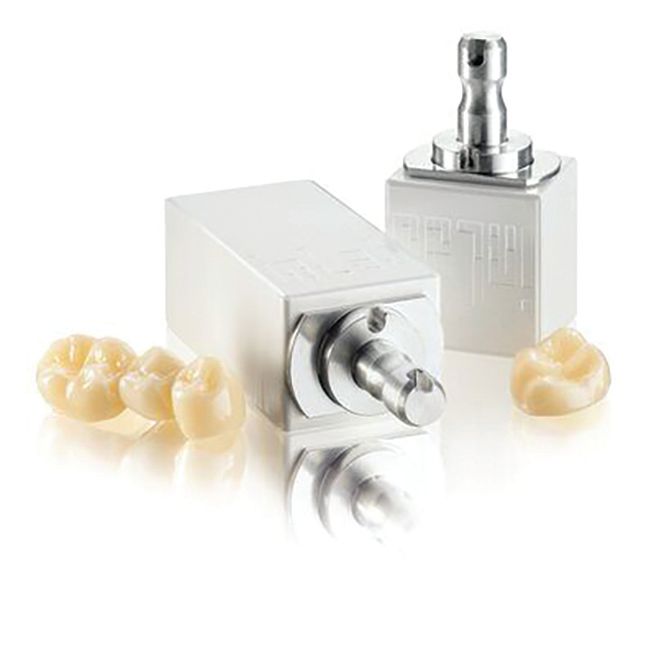
3M™ Chairside Zirconia
- CAD/CAM zirconia block optimized for the fast-sintering CEREC SpeedFire furnace. The block offers an optimal blend of high strength and esthetics, in addition to a fast sintering time.
- It is available in 8 different shades and 2 block sizes designed for crowns and 3-unit bridges to match the VITA classical shades.
- Features a high flexural strength of 1000 MPa (fast fired); it also requires a low minimum wall thickness of just 0.8 mm, enabling less invasive preparations and preserving more tooth structure. 3M Chairside Zirconia’s fracture toughness upholds stringent ISO standards.
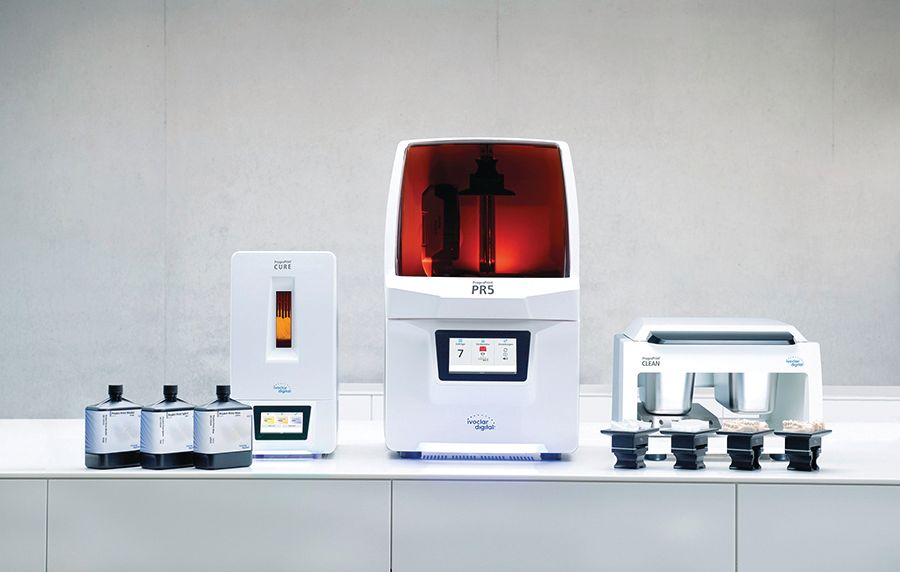
PrograPrint™ System
- This 3D printing system is integrated into a validated workflow, consisting of a range of materials, software, and equipment for printing, cleaning, and postcuring. The PrograPrint PR5 3D printer is the centerpiece of the system, featuring an automatic material recognition.
- The PrograPrint Clean is the second unit that was specifically designed to clean excess material off the printed object in a 2-step process. The final step is curing the printed object.
- The PrograPrint Cure uses LED technology and can cure not only ProArt Print materials, but also other conventional lab composites.
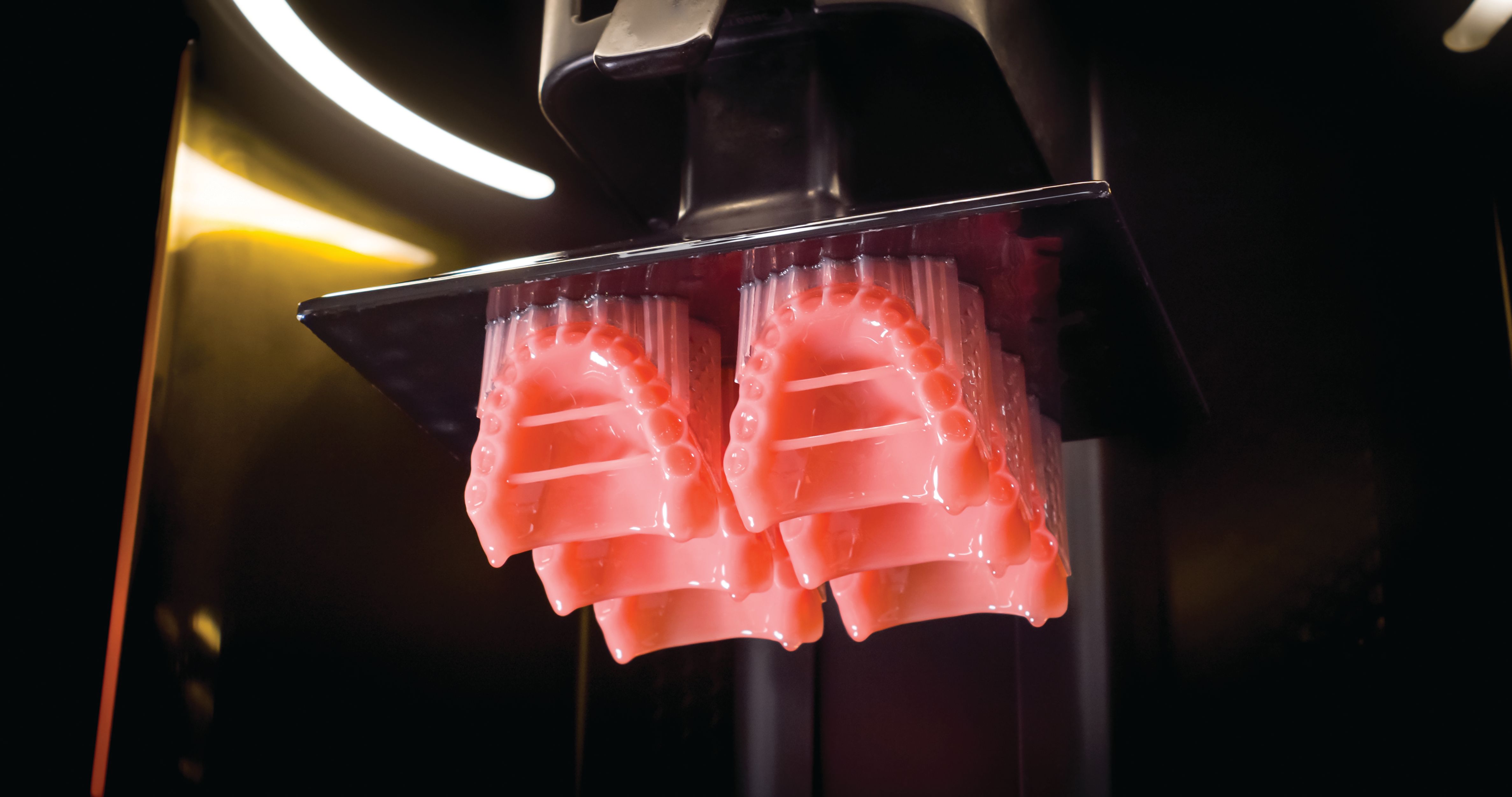
Carbon L1 and M Series Printers
- The Carbon Digital Light SynthesisTM (Carbon DLSTM) 3D printing process allows dental labs to produce accurate, high-quality dental models up to 10 times faster than traditional manufacturing
- In collaboration with partners, Carbon has delivered a portfolio of biocompatible dental materials optimized for the production of dental parts including night guards, surgical guides, castable crown and bridge, and removable frameworks, indirect bonding trays, and dentures.
- Lucitone Digital PrintTM 3D Denture Resin (Dentsply Sirona) is the first 3D-printable denture resin that exceeds impact standards.
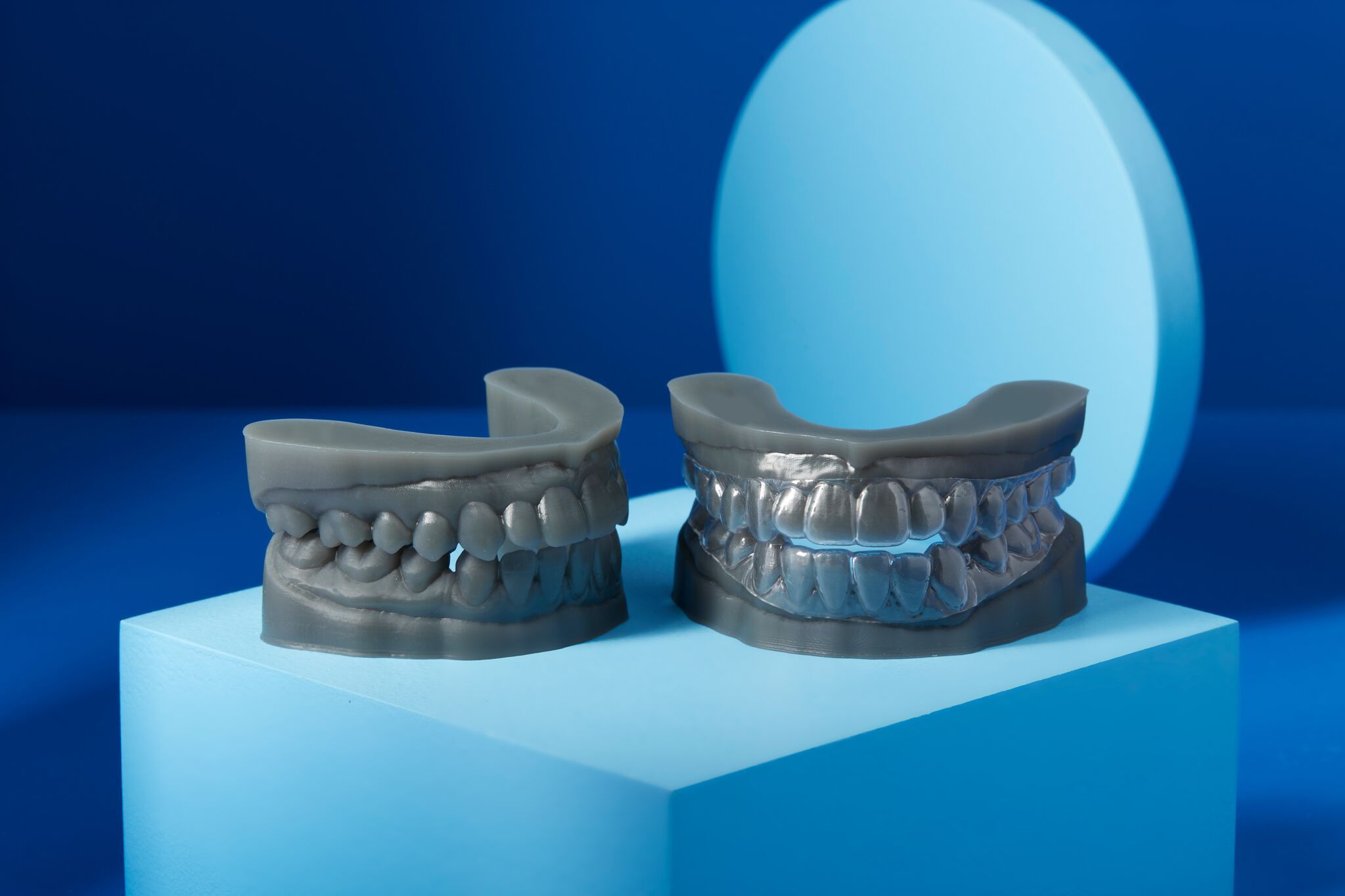
Draft Resin
- A cutting-edge material designed to print accurate orthodontic models -- fast
- Print one model in 20 minutes
- Don't sacrifice on accuracy: quality standards meet or exceed other model resins
- Compatible with Form 2, Form 3B, and Form 3BL for use in both laboratories and practices
- Deliver precise fitting aligners and retainers quickly, without breaking the bank

Ivotion
- Combining proven high-quality tooth and denture base materials in a single bicolor disc, Ivotion Digital Denture provides digital laboratories with an efficient, predictable, monolithic milling solution.
- The Ivotion monolithic milling disc features unique Shell Geometry, a data-based 3D tooth and dental arch structure suitable for the rapid digital fabrication of removable upper and lower dentures.
- Integrated exclusively into 3Shape Dental System 2020 CAD software, it allows patient-specific customization.
- Dentures are milled in one uninterrupted milling process.
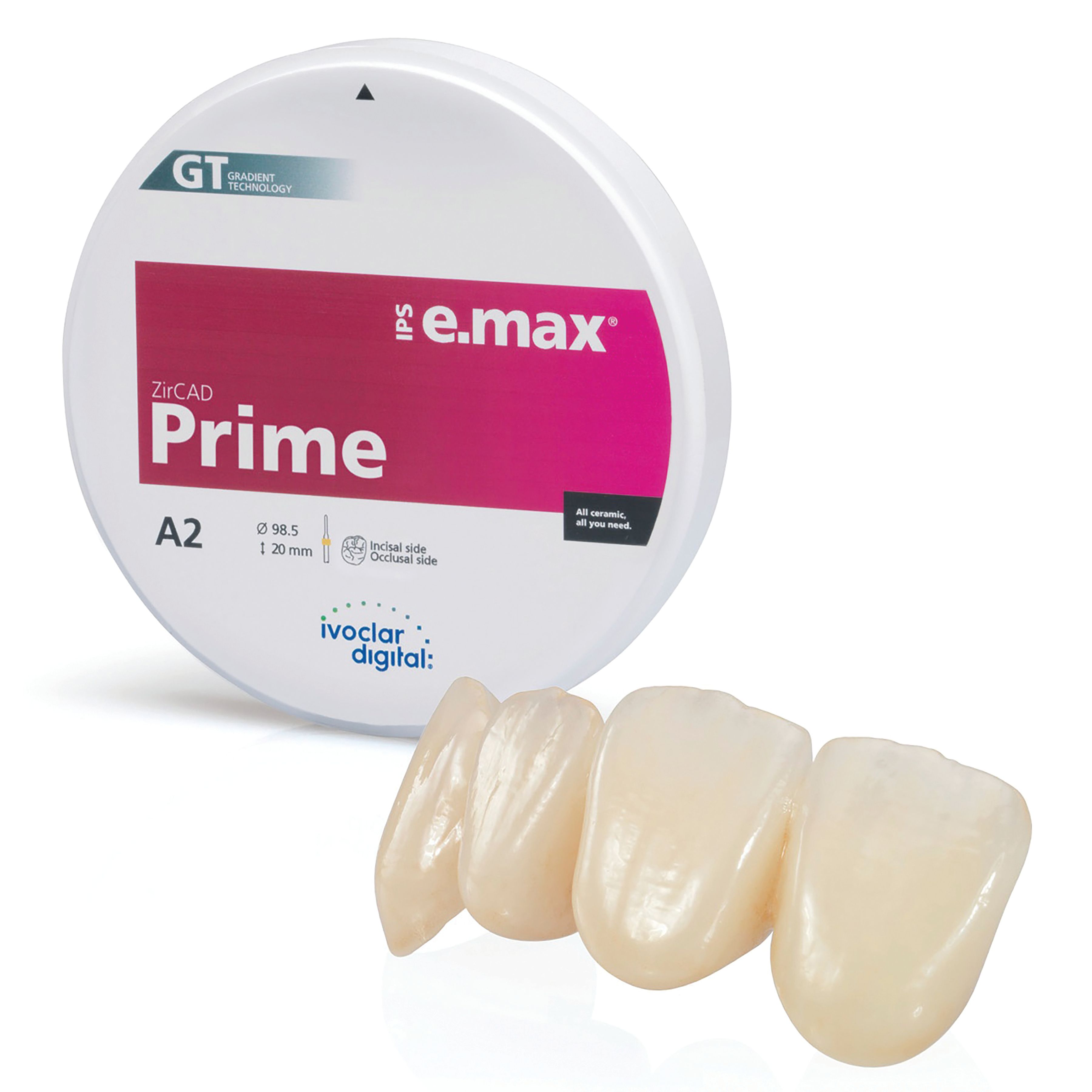
IPS e.max® ZirCAD Prime
- Gradient Technology (GT), a new manufacturing process uses special powder conditioning to combine 3Y and 5Y oxide-ceramics for the ultimate in strength and esthetics.
- Unlike multilayered materials, which can have visible layers of color, GT offers a seamless progression of shade, translucency, and composition to provide premium esthetics combined with exceptional strength.
- With a flexural strength of 1200 MPa, it is suitable for any indication.
- In combination with the Programat® S1 1600, a full tray of single crowns can be sintered in only 2 hours and 26 minutes.

Zirconia Discs
- Alien Milling offers 4 unique blends of Zirconia Discs.
- Alien HT comes in 16 preshades and White. It offers 1200 MPa and comes in 5 sizes, as large as 30 mm.
- Alien Multi-Layer is the strongest multilayer on the market today. Rated at 1100 MPa, this zirconia is suitable for full arch cases.
- Stardust offers a porcelain-like incisal edge.
- Alien Extreme offers one of the highest translucencies in the market and an overall flexural Strength of 1000 MPa.
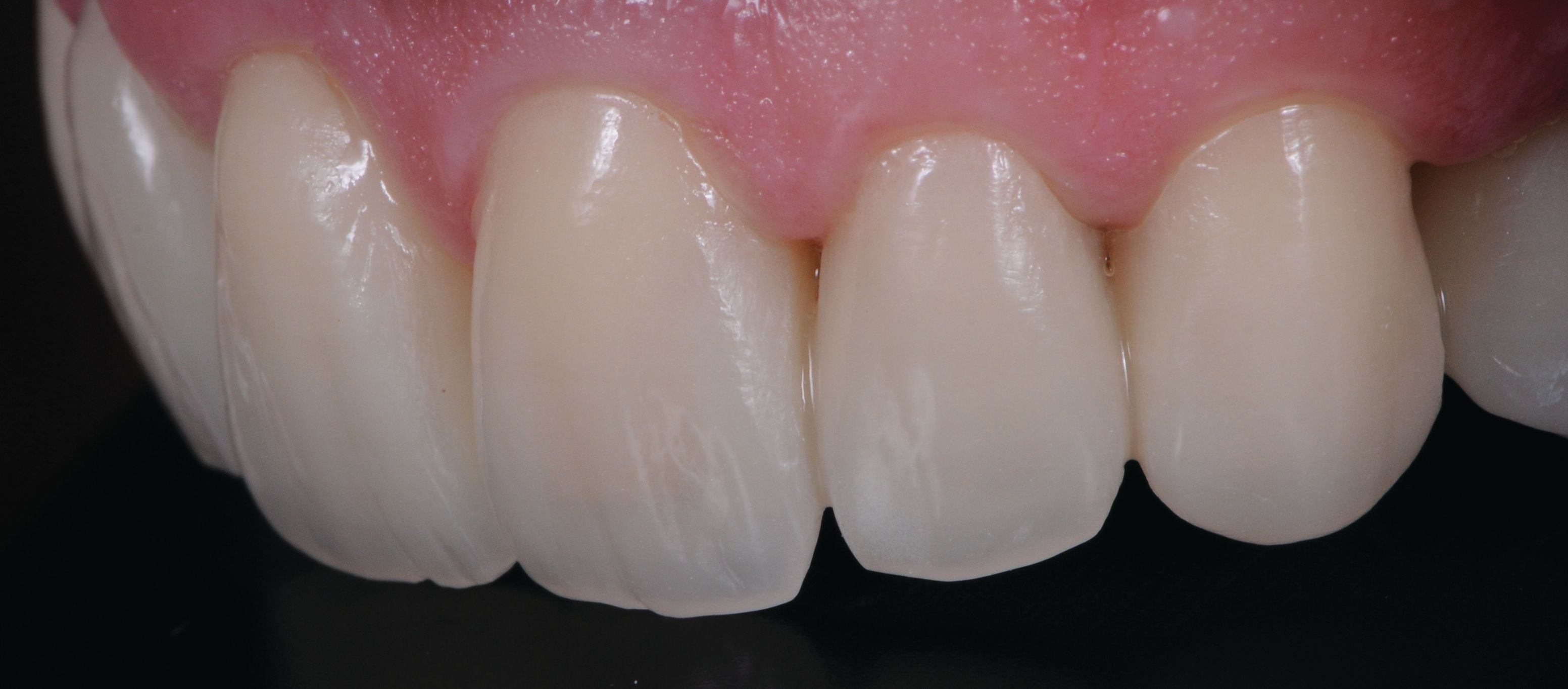
PREMIOtemp
- A multilayered PMMA material, this ultra-esthetic temporary material combines 5-plus layers of colors into 1 disc, giving the restoration the most natural look possible.
- The top of the gradient disc is lighter and very translucent (incisal) and gradually shades down to the bottom that is darker (cervical).
- Special acrylic resins are combined with organically modified ceramics for increased translucency and mechanical properties.
- Due to the strength and esthetics, it is designed for long-term temporaries, cemented or screw retained, and is available in all VITA shades.
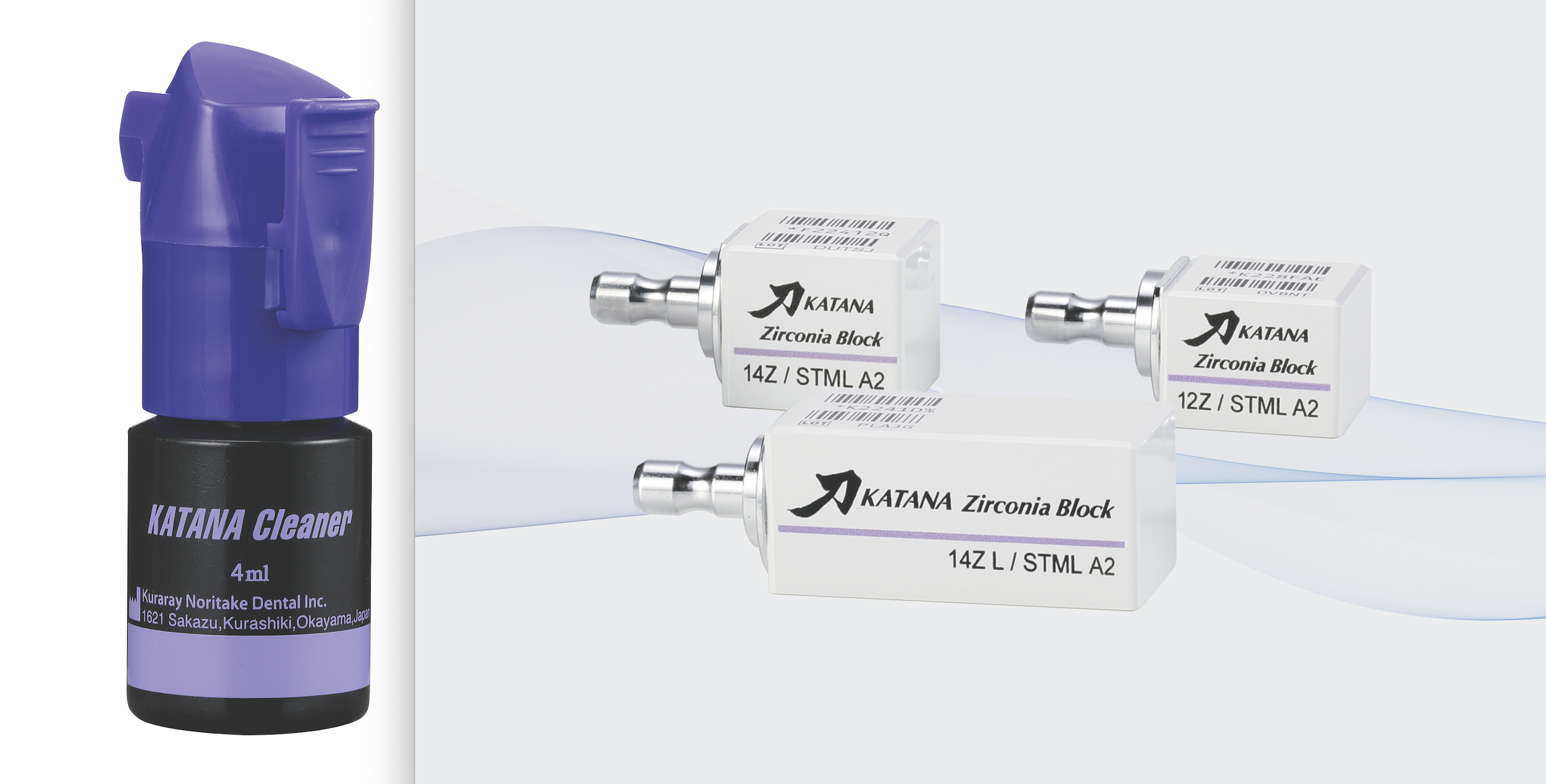
KATANA™ Zirconia Block
- This new zirconia block is to be used with the CEREC system. The collaboration of Kuraray’s materials technology and Dentsply Sirona’s advanced-technology equipment now makes it possible to fabricate full zirconia restorations in approximately 35 minutes.
- The multilayered block consists of 4 layers of zirconia in gradated shades, allows the chairside fabrication of natural-tooth-colored restorations, and eliminates challenges in staining.
- KATANA™ Cleaner is a universal cleaner with MDP salt and a pH of 4.5 for intra- and extraoral application.
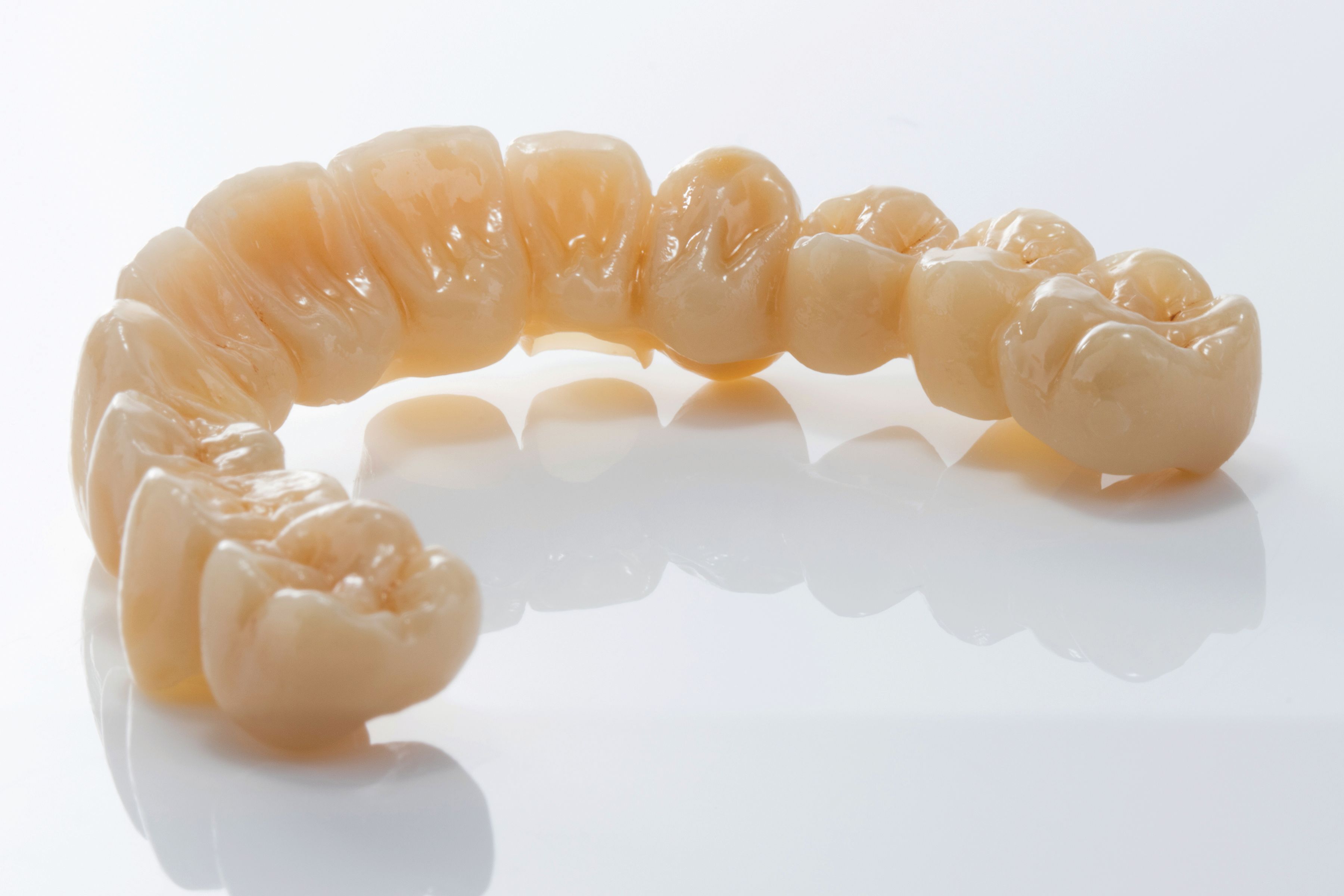
Zirlux® Transitions
- The newest addition to the Zirlux portfolio of digital materials is a highly esthetic and strong zirconia that uses transitional layered technology to mimic nature and lifelike esthetics without reducing strength.
- The patented Smart Incisal™ Technology incorporates a blueish-gray effect on the top third zone of the disc to reduce the white value and mimics the natural tooth’s blueish-gray translucency, resulting in a higher chroma in the cervical area and lower chroma toward the incisal.
- Optimal balance of strength and translucency provides 1 premium zirconia for anterior and posterior restorations.
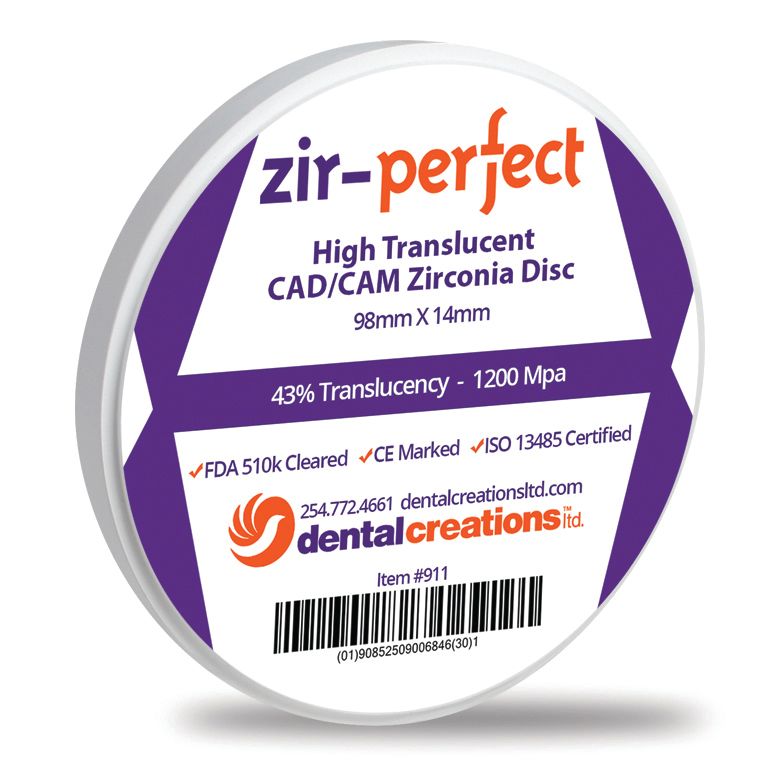
Zir-Perfect High Translucent CAD/CAM Zirconia Disc
- This zirconia disc is created with superb strength, long-term stability, high natural translucency, and excellent esthetics.
- Due to the 3-point flexural strength of 1200 MPa after sintering and natural translucency of 43%, this block produces long-lasting, beautiful restorations that have a natural appearance and function.
- 9 perfectly matched shades include white for use with dip stains
- Sizedat 98 mm x 14 mm and, the discs can be used on most open CAD/CAM milling machines.
- Zir-Perfect can be used to fabricate crowns, bridges, inlays, and veneers.

TriLor® and TriLor® Arch
- TriLor is a high-performance techno-polymer matrix with multidirectional glass fiber reinforcement. Lightweight and resilient, it is indicated for copings and substructures and utilized for permanent implant supported frameworks and clasp supported removable partial dentures.
- It exhibits natural flex and load parameters, making it the ideal replacement for unforgiving metal and zirconia frameworks.
- The versatility of this 510(k)-certified polymer ensures a biocompatible alternative to metal and zirconia restorations.
- TriLor and TriLor Arch are ideal for helping labs streamline processes.
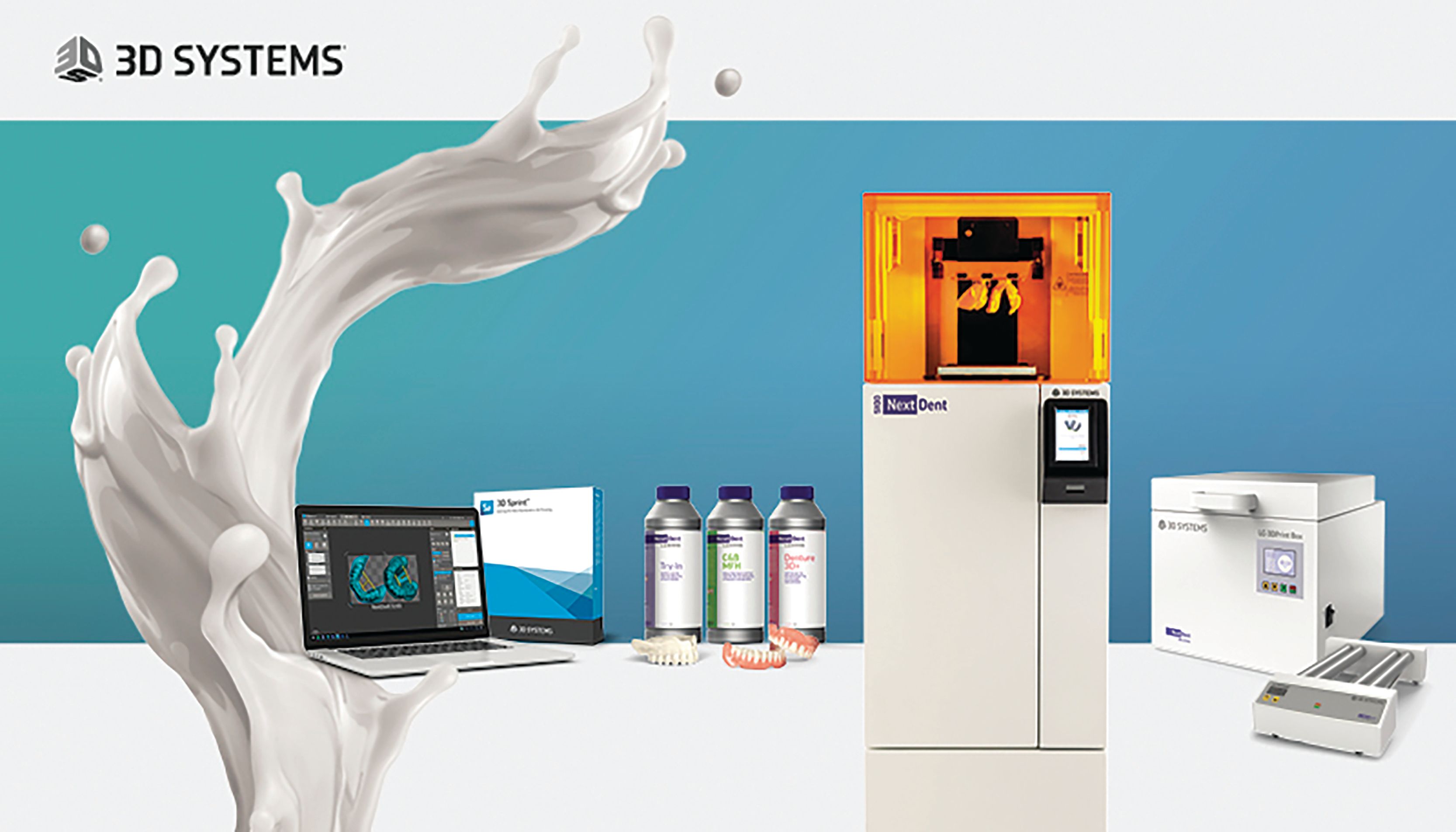
NextDent® 3D Printing Materials
- This trusted, complete 3D printing workflow is for the broadest range of applications with certified NextDent 3D printing materials.
- The end-to-end digital workflow includes easy-to-use 3D Sprint™ software for automated part placement.
- 3D Systems’ NextDent 5100 facilitates high-speed 3D printing for dental devices and fixtures.
- Combine it with other 3D Systems dental solution components to create a comprehensive and trusted workflow, includingthe LC-3DMixer for optimal stirring of materials and the LC-3DPrint Box for UV postcuring.

Aurident Zr
- These discs deliver the versatility and simplicity of 1 disc for both posterior and anterior restorations, from single units to long-span bridges
- Aurident Zr discs have the strength (1100 MPa) and translucency (47%) to meet all needs, streamline zirconia inventory, and enhance efficiency
- Made in the United States, Aurident Zr is currently available in shaded and unshaded discs along with Aurident Zr coloring liquids
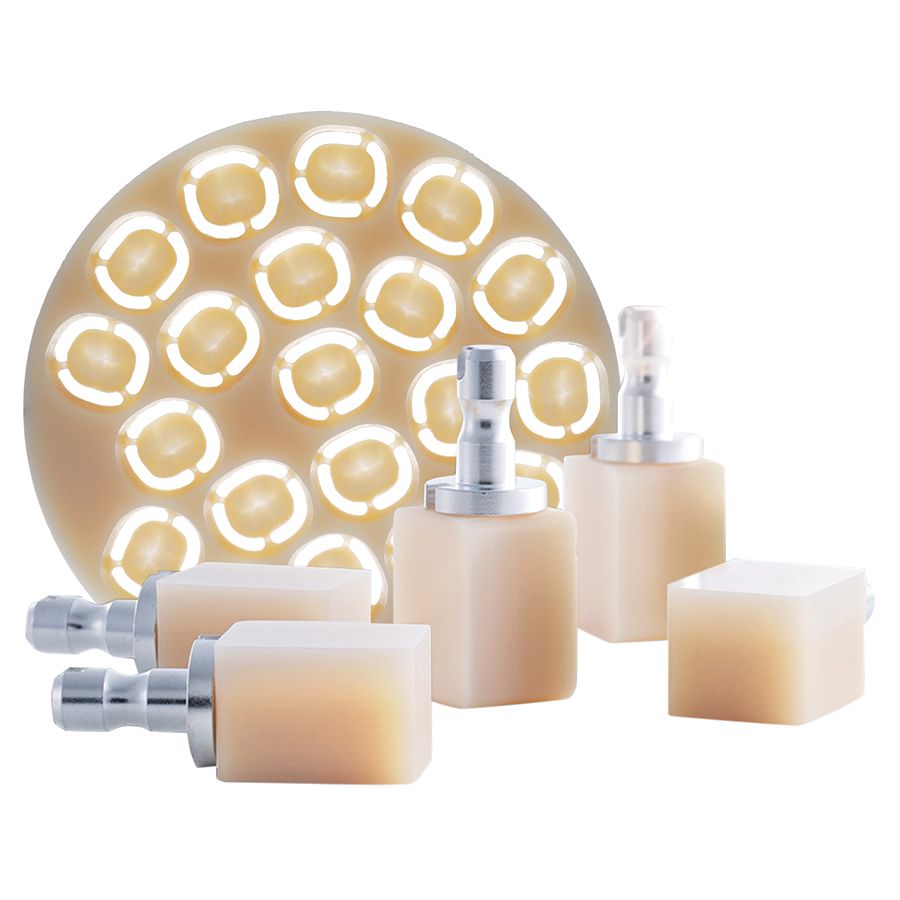
Shofu Block & Disk HC
- This material is composed of 61% zirconium silicate, a densely packed nanofiller that forms a skeleton that uniformly absorbs masticatory forces and promotes resistance to breakdown phenomena.
- Milled quickly and precisely and polished to a high gloss in a very short time, it is ideal for both anterior and posterior restorations, implant-supported cases, and long-term provisionals due to the high flexural strength of 191 MPa and Vickers hardness of 66 Hv0.2.
- Dentitionlike light transmission makes this optimally balanced hybrid ceramic ideal for the production of highly esthetic anterior restorations.
Shofu Dental
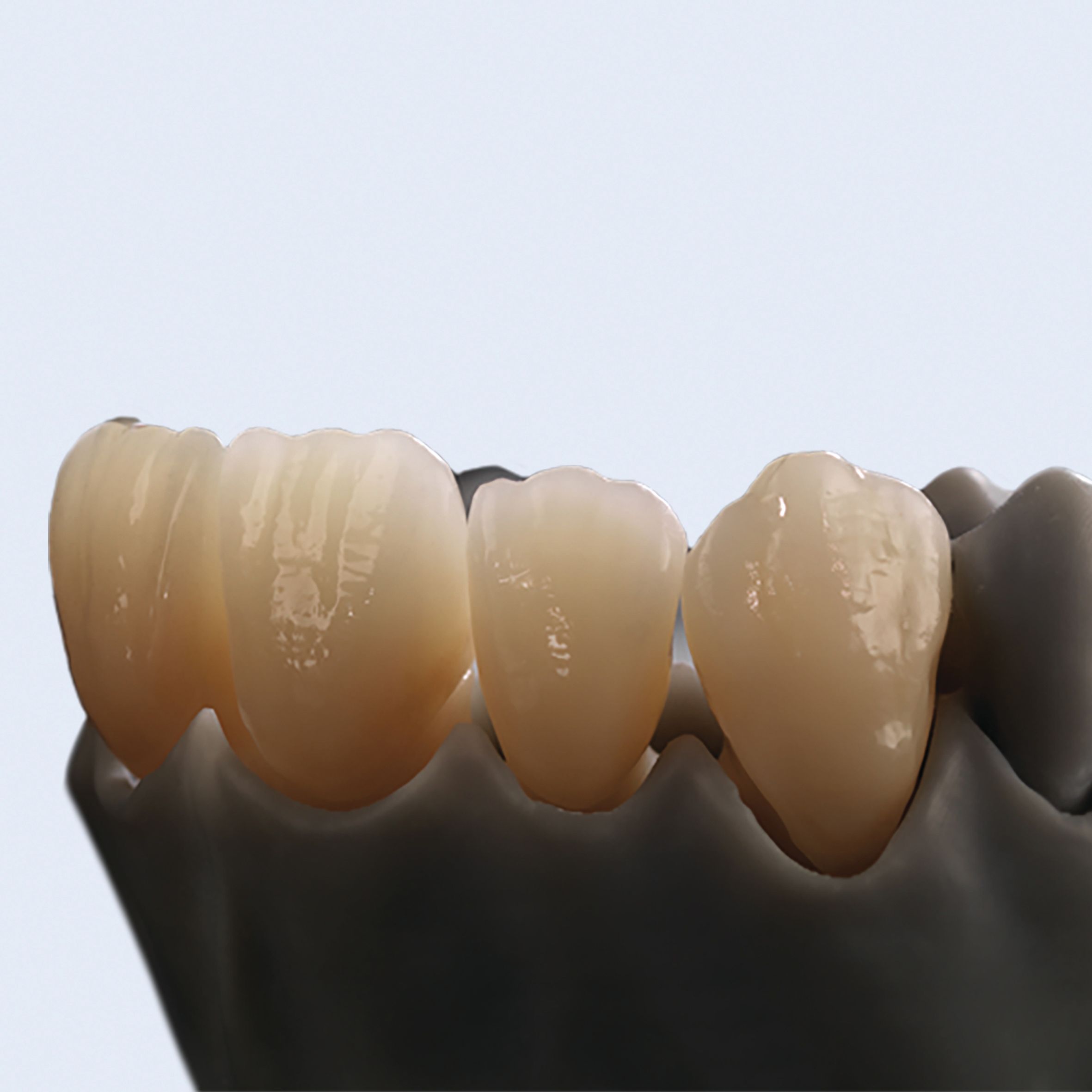
Zolid Gen-X Zirconia
- This all-around zirconia puts an end to the search for the right blank for the required restoration.
- It combines all the advantages of the Zolid Zirconia product group: excellent esthetic properties and optimal mechanical values.
- A natural color gradient takes the blank to a new level in terms of efficiency and esthetics. The flowing color and translucency gradient is a perfect imitation of nature, and the results are outstanding.
- A flexural strength of over 1000 MPa allows virtually all types of fixed dental restorations to be realized.
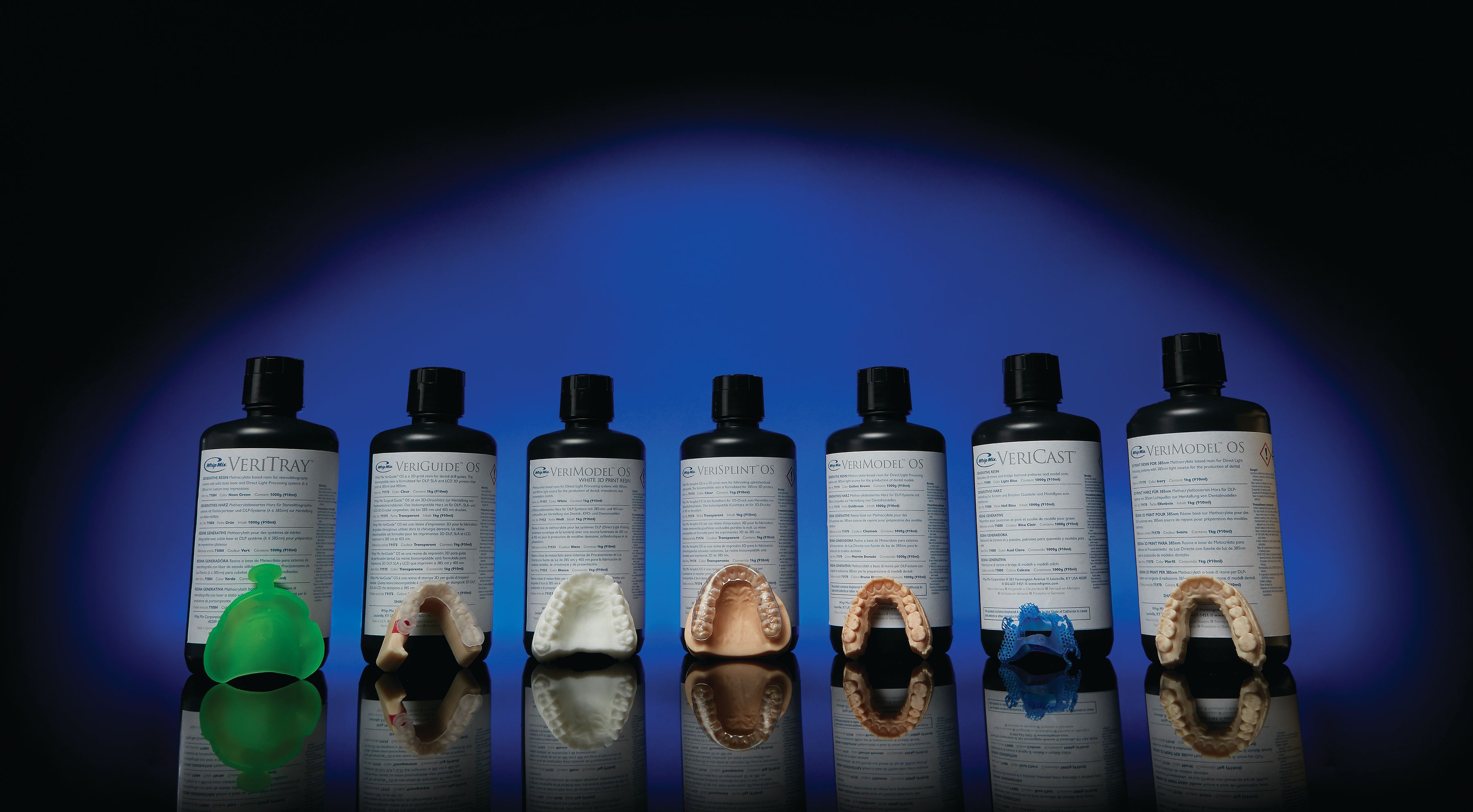
Whip Mix Resins
- VeriSplint OS is clear, rigid, and durable for splints; it is validated on Asiga 385nm printers and complies with all international medical regulations.
- VeriGuide OS is the ideal print resin for surgical drill guides.
- VeriModel OS resins are methacrylate-based and provide sharp detail and toughness. The golden brown and gray make anatomical detail easy; natural ivory color doesn’t influence the color of tooth-colored restorative materials; white is ideal for printing true-white ortho models.
- Vericast OS is ideal for any crown, bridge, or removable framework burnout pattern, while VeriTray is for creating custom impression trays.

Structur CAD
- Available in both discs and blocks, Structur CAD is a strong and esthetic composite material for milling long-term temporary crowns and bridges.
- Restorations fabricated from the material can serve for up to 3 years.
- The material is said to offer a high degree of edge stability after milling.
- It does not require firing nor glazing and can be polished quickly for natural-looking fluorescence/esthetics. Temporary restorations fabricated can be customized and repaired with conventional composites.
- The material can be cemented using either temporary cement or a longer-lasting dental adhesive, and it does not require an MMA primer.

Cercon xt / Cercon ht
- Designed for optimal color accuracy, premium esthetics and fast production, Cercon ht and Cercon xt blanks are made of yttria-stabilized zirconium oxide (Y-TZP) and used in fabricating frameworks for fixed prosthetic restorations.
- Benefits include easy handling, time savings, and efficiency.
- With a wide range of indications, from single units to multiunit bridges, zirconia is the strongest all-ceramic dental restoration material on the market.
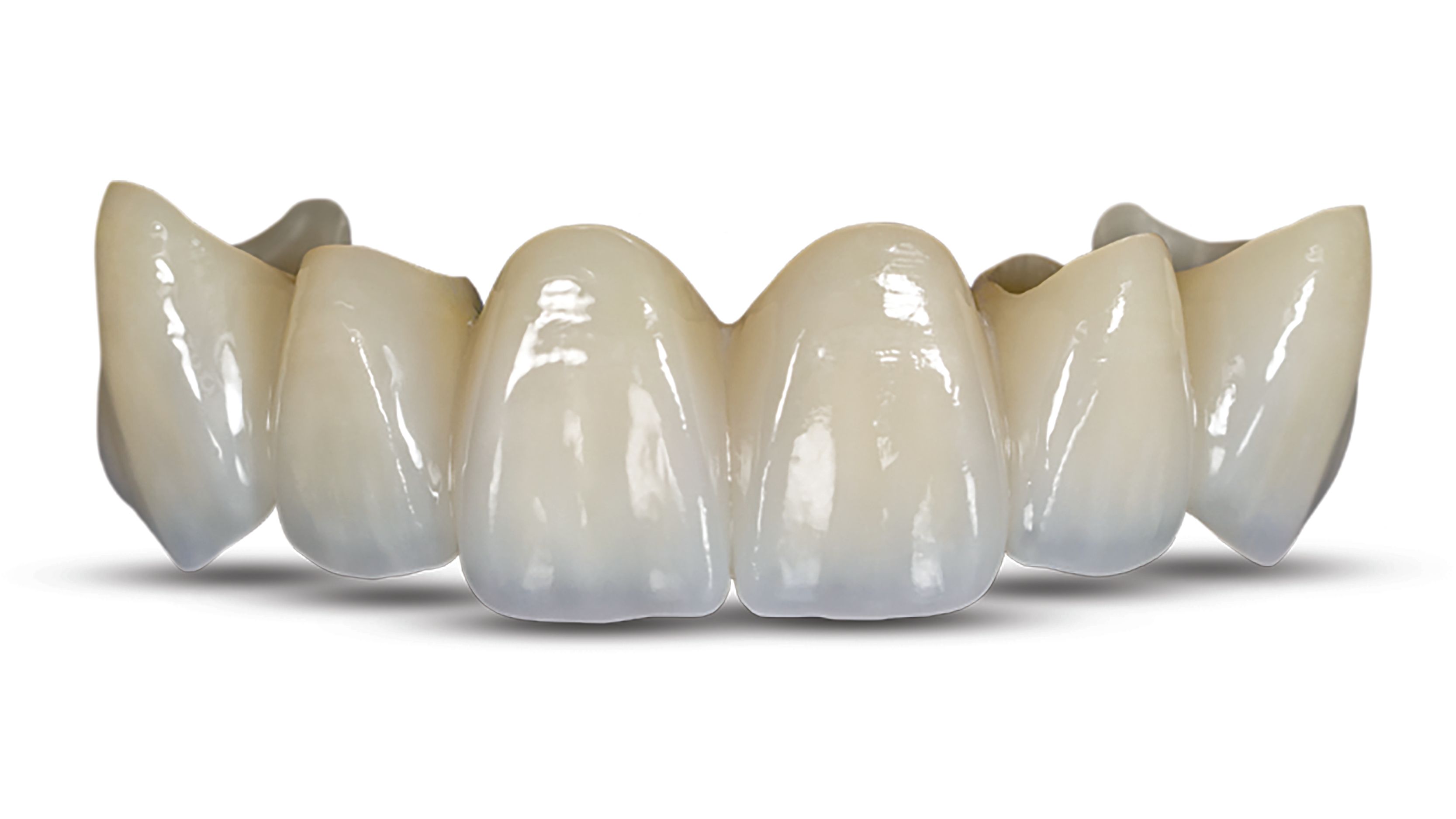
BruxZir® Esthetic Zirconia
- This new category of dental zirconia was made possible by years of R&D and offers and optimized combination of strength and translucency.
- The anterior-grade formulation is created using proprietary processing, which results in natural translucency, beautiful shade matching, and extraordinary strength.
- Enhanced shade matching gives predictable results.
- With an average flexural strength of 870 MPa, this material can be prescribed in tandem with the original BruxZir Full-Strength Zirconia to enable clinicians to utilize monolithic zirconia across the entire arch.
Related Content:

 Download Issue: Dental Lab Products December 2020
Download Issue: Dental Lab Products December 2020

